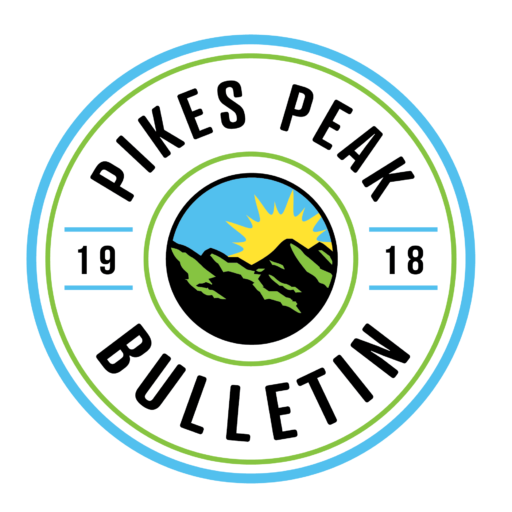Billy Kinn is the Director of Environmental Education at Catamount Institute, a Colorado Springs nonprofit with a mission to connect kids to the outdoors throughout the Pikes Peak Region.
Tell us about yourself.
I was privileged to be raised by an outdoor-focused family, who moved me and my sisters to Colorado Springs in the ‘90s. From growing up traipsing around the Rockies, backpacking, climbing, and summiting peaks, I forged a deep connection and love for the natural world. I learned and experienced how precious our landscapes are, especially during moments like being evacuated for the Waldo Canyon fire. After some stints working in restoration ecology and soil science, it became clear to me that having a future with a healthy environment ultimately depends on more people loving the outdoors. I’ve focused my efforts into environmental education for over a decade now. I’m currently the Director of Environmental Education at Catamount Institute, where I’ve worked since 2019.
Tell us about your organization the Catamount Institute and how it helps the environment.
Catamount Institute has been the Pikes Peak region’s primary local nonprofit for youth outdoor education for almost thirty years. Our mission is to connect kids to the outdoors, which means we do anything and everything we can to spark a passion and understanding of nature to as many kids as possible, from all walks of life. We have 13 programs that serve over 6,000 participants annually. From pre-K to seniors in high school, we provide accessible experiences that provide opportunities for lessons, skill-building, recreation, and personal growth. We cover anything that fosters nature connection, such as fire ecology science experiments, scat and tracks identification, overnight trips, paddle boarding, art, and much more.
Why is this work important?
It has become almost cliche to say it, but the future of our region and world is in the hands of the next generation. This, of course, has been told about every upcoming generation. My parents said it to me, and I’m sure my grandparents said the same exact phrase to them as well. I would argue that we are at a unique time where environmental education can have the most short-term and long-term impact than ever before. In an age of pervasive technological reliance, digital interconnectedness yet also social disconnection, high rates of mental health issues, and exponential environmental destruction, our mission of connecting kids to nature can really help give kids a sense of peace, a place where they feel safe, and hopefully, add them to the growing number of ecological stewards our future desperately needs.
What is the Pikes Peak Region doing well regarding the environment and sustainability?

The Pikes Peak Region is unmatched in terms of outdoor recreation opportunities, such as trails, open space and climbing. How many places in the world can you start a trail run that goes for 32 miles or climb at three different crags in a week, all in city limits? Throughout the Pikes Peak region, these recreational resources are being added to as well, like the Avenger Open Space in Woodland Park, or new trails at the Santa Fe Open Space. Pair our massive outdoor rec resources with our incredible network of organizations working together to increase community responsibility and accessibility to our outdoor spaces, and we are steadily working towards having a region-wide community that plays hard and also works hard for our local landscapes. Catamount Institute is proud to be part of the Great Outdoors Colorado-funded coalition called Generation Wild of the Pikes Peak Region, which strives to connect underserved kids and families to nature. We work alongside great organizations such as Kids on Bikes, Fountain Creek Watershed District, and Rocky Mountain Field Institute, to name a few.
Where does our region need to improve?
I work in education because I feel strongly that it makes a difference for people and the planet. Often, I don’t see the long-term fruits of our work because I don’t always know where a child ends up later in life. Environmental education is more of a long-term investment approach to conservation, and even if I don’t see changes overnight, I have to continue to believe that my efforts will pay off. This is my wish for all in our region: to hold onto hope and to keep up the amazing momentum we have gained. It can be easy, or sometimes even feel ‘logical’ to see challenges we face as insurmountable or too slow at times. However, I feel like our region has come a long way, and each year we continue to take steps in the right direction through collaboration, communication, and creative problem-solving. As long as we all continue to come together for the common good, we’ll continue to improve, as we always have.
What improvements would you like to see specific to the Westside and Manitou Springs?
I would like to see more access and promotion of the unique, beautiful gems the Westside and Manitou Springs have to offer! Our organization is located at Sondermann Park, on the Westside by Uintah and Chestnut, and most people haven’t even heard of this lovely public open space! There are many other smaller open spaces and trails that could get more people out and connected to different communities if they are only able to be looped in and included! Some folks may not like increased numbers in certain areas, but more people in the know means more people who can appreciate, lift up, and help out our local natural resources.
Do you want to be featured in the Sustainability Q&A? Email heila@pikespeakbulletin.org or call 719-373-1150.

